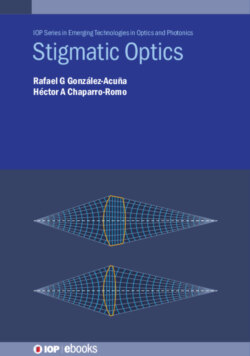Читать книгу Stigmatic Optics - Rafael G González-Acuña - Страница 13
На сайте Литреса книга снята с продажи.
1.2 Lorentz force
ОглавлениеLet’s start with the definition of the electric field. An electric field can be described as a vector field in which a point electric charge of value q suffers the effects of an electrical force F⃗ given by the following equation:
F⃗=qE⃗,(1.1)
where E⃗ is the electric field. Electric fields can be originated, from both electrical charges and variable magnetic fields.
Electric fields can be positive or negative. They are positive if they are generated by positive charges, and negative if they are generated by negative charges. Charges with different sign are attracted and with similar charge repel each other. Since the electric field is a vector space it can be represented as vectors, thus it is usually represented as vector lines. The lines emerge from positive charges and end in negative charges, as can be seen in figures 1.1–1.3.
Figure 1.1. Charges with different sign are attracted.
Figure 1.2. Positive charges repel each other.
Figure 1.3. Negative charges repel each other.
A magnetic field is a vector field that specifies the magnetic influence of electric charges in relative movement and magnetised materials. A charged that is moving parallel to a current of other charges experiences a force perpendicular to its own velocity described by
where is the velocity of the charge and B⃗ is the magnetic field. Please notice the cross product in equation (1.2) describes that if the charge is moving along the magnetic field B⃗ its force will be zero.
For a particle subjected to an electric field combined with a magnetic field, the total electromagnetic force or Lorentz force on that particle is given by the combination of equations (1.1) and (1.2),
The Maxwell equations entirely describe the nature of the electromagnetic fields E⃗ and B⃗. In the following sections, we are going to describe them briefly.
